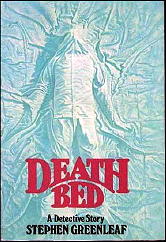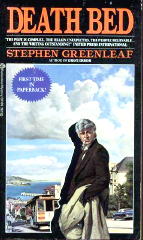Mon 21 Sep 2015
Reviewed by William F. Deeck: ANTHONY BERKELEY – Mr Priestley’s Problem.
Posted by Steve under Reviews[3] Comments
William F. Deeck
ANTHONY BERKELEY – Mr. Priestley’s Problem. Collins Crime Club, UK, hardcover, 1930. Originally published as by A. B. Cox: Collins, UK, hardcover, 1927. Penguin, UK, paperback, 1948. Doubleday, US, hardcover, 1928, as The Amateur Crime, as by A. B. Cox.
Practical jokers are the bane of civilisation. Their only purpose seems to be to present a persuasive argument for retroactive abortion. Still, they are tolerable if confined in the pages of a novel, where no one real is likely to suffer from their untender ministrations. And in this novel it may be that the biter gets bit.
Matthew Priestley, age 36 but seemingly a great deal older than that to his friends, is content with his Greek and Latin studies, his books, china and collection of snuffboxes. A friend argues that Priestley only thinks he’s happy, though if that is good enough for Priestley it should be good enough for anyone.
In order to get Priestley out of his dull and stodgy ways, and also to do a psychological study of the reactions of a good man who inadvertently commits a murder, Priestley’s friend and some of the friend’s colleagues set up a drama in which Priestley seems to kill a man. Things, of course, go wrong for the plotters.
The young lady who lures Priestley to the scene of the crime-to-be gets handcuffed to him by a constable who arrives quite unexpectedly after the fake murder. This young lady is the perfect example of the ‘modern girl’ of the 1920s. Everything is lots of fun as long as someone else is having problems; when she begins to be hoist by her own petard, she longs to return to the old standards.
Meanwhile, the chaps who set up the fake murder find themselves confronted with a bit more than just the dim local constabulary. They appear to enjoy themselves as the situation becomes more complicated, but it is obvious that the strain is beginning to tell.
The whole thing is, one hopes, totally preposterous, but it is also great fun, as long as one isn’t Priestley, and maybe even if one is. Suspend disbelief and enjoy Anthony Berkeley at his wildest, though arguably not at his best.
NOTE: Thanks to Geoff Bradley, editor and publisher of CADS magazine, for offering me the use of the reviews that Bill Deeck did for his magazine, an offer which I immediately accepted. This is the first of these. Along with Bill’s reviews from Janet Rudolph’s Mystery Readers’ Journal, you can expect to see his byline on this blog for some time to come. You can email Geoff for subscription information for CADS by clicking the link. (Tell him I sent you.)

